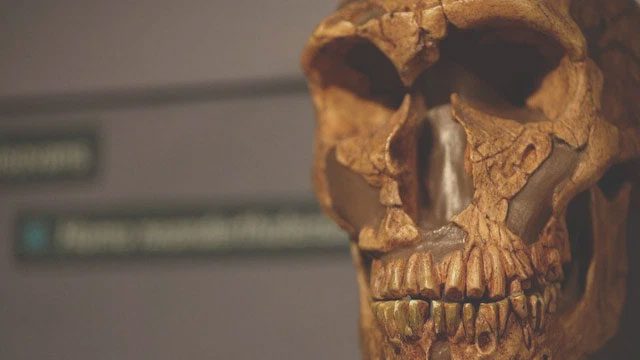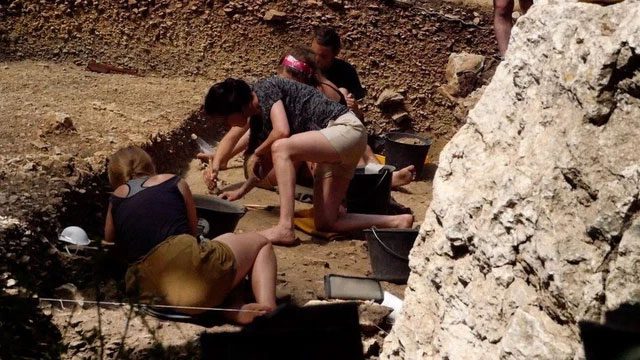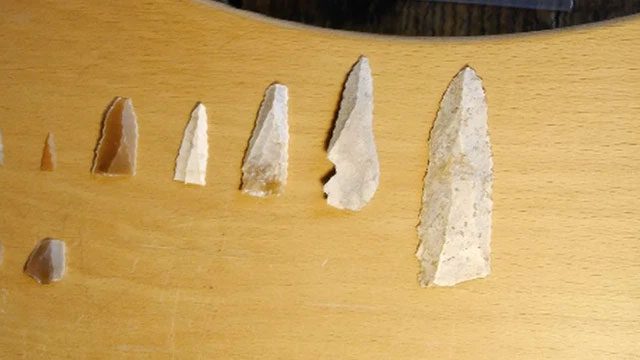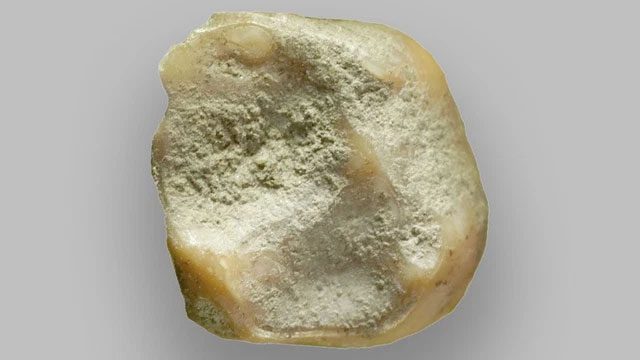A discovery of a child’s tooth and stone tools in a cave in southern France indicates that Homo sapiens inhabited Western Europe approximately 54,000 years ago.
This fossil evidence suggests that our ancestors arrived here several thousand years earlier than previously thought, and it also indicates that both Homo sapiens and Neanderthals may have coexisted for a significant period.

Neanderthals were a distinct human species that inhabited Europe for hundreds of thousands of years until their extinction around 40,000 years ago.
This new study has been published in the journal Science Advances.
The fossils were discovered in the Grotte Mandrin cave in the Rhône Valley by a research team led by Professor Ludovic Slimak from the University of Toulouse. He was surprised to find evidence of early modern human habitation.
“We can now demonstrate that Homo sapiens appeared here 12,000 years earlier than we expected; however, this population was later replaced by other Neanderthal groups. This really makes us reconsider our view of human history.”

Archaeologists discovered modern human remains in the Grotte Mandrin cave dating back 54,000 years, thousands of years earlier than previously believed.
Neanderthals appeared in Europe around 400,000 years ago. The current hypothesis suggests they went extinct about 40,000 years ago, shortly after Homo sapiens left the African continent.
However, the new discovery indicates that our species arrived in Europe much earlier, and these two species may have coexisted in Europe for over 10,000 years before Neanderthals went extinct.
According to Professor Chris Stringer from the Natural History Museum in London, this archaeological finding challenges the current view that our species quickly overwhelmed Neanderthals.
He stated: “It wasn’t an overnight takeover by modern humans. Sometimes Neanderthals had the advantage, sometimes modern humans did, so this competition was fair and lasted longer than we thought.”
Archaeologists have found fossil evidence from multiple geological layers in this area. The deeper the archaeologists excavated, the further back in time we could see. The deepest layers show that Neanderthals occupied this area for about 20,000 years.
In light of this completely new finding, the research team discovered a modern child’s tooth in a layer dating back approximately 54,000 years, along with several stone tools made in a manner unrelated to Neanderthals.
The evidence suggests that early Homo sapiens lived at this site for a relatively short period, perhaps around 2,000 years later, the site was uninhabited. Subsequently, Neanderthals returned, occupying the site for several thousand more years, until modern humans returned around 44,000 years ago.

The tools found with the child’s tooth. There is speculation that the smallest specimens could be arrowheads.
Professor Stringer remarked: “Modern humans appeared for a short time, then there was a gap that may have been caused by climate change, preventing our ancestors from adapting, and then Neanderthals returned.”
Another significant finding is the connection of the stone tools found in the same sediment layer with the modern child’s tooth. Tools made in a similar fashion have been found at several other sites – in the Rhône Valley and even in Lebanon, but scientists have not yet determined which species created them.

This child’s tooth fragment may change the narrative about the emergence of modern humans.
Some researchers speculate that some of the small-sized tools found may be arrowheads. If confirmed, it would be quite an exciting discovery: an early group of modern humans using advanced weaponry, including bows and arrows, to outcompete Neanderthals 54,000 years ago. However, if this is the case, it would only be a temporary advantage.
So, if our species did not immediately wipe them out, what gave us the advantage?
Many ideas have been proposed by scientists: the ability to create art, language, and possibly our superior brain. However, Professor Stringer believes that this advantage came from our ancestors living and operating in a more organized manner.
“We had the ability to connect between individuals in larger groups, our social groups were also larger, while Homo sapiens stored knowledge better, and our social organization was built on that knowledge,” he stated.
According to Professor Stringer, the idea of prolonged interaction with Neanderthals aligns with the 2010 finding that modern humans carry a small amount of Neanderthal DNA, indicating that the two species interbred.





















































